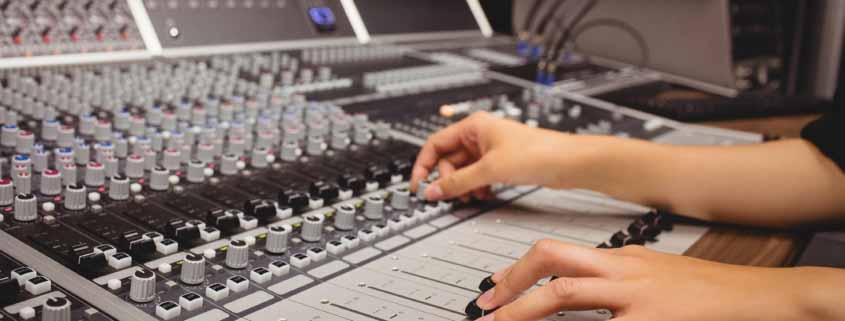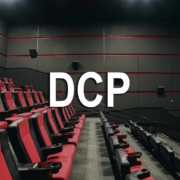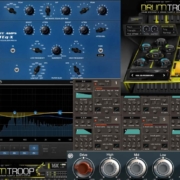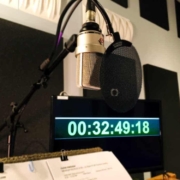What is Audio-Post Production, the Roles and Process?
The word “POST” means “behind,” “after,” or “later,” in context. In production, it refers to the last stage in the process.
Audio post-production is an essential process in the film industry. It can be anything from adding sound effects to a film, mixing dialogue, or even fixing background noise.
The most common program used for audio post-production is Pro Tools. Pro Tools has been used for decades in the industry and it’s used for almost all major motion pictures. Other programs include Logic, Adobe Audition, and Audacity.
What is Post-Production
Post-production is an important part of audio engineering and can be done using a mix of analog and digital tools. The process begins with the sound engineer who records an audio source (e.g., a band performing live, film onset, or voice-over) onto a DAW (digital audio workstation). This raw recorded audio is then “mixed down” to produce a stereo or surround sound version that can be played back on any system like radio, streaming platforms, CD player, iPod, or iPad.
Audio Production vs Audio Post-Production
Audio production consists of the pre-production and production stages. It is the process of sound recording or capturing. Whereas audio-post production is the last step in the production process of editing and modifying recorded audio using digital tools.
Audio Post-production Related Roles
- Dialogue Editor | The dialogue editor’s job involves making sure that all of the lines are audible, that there are no extraneous noises or voices on other channels, and that all of the dialogue matches up with mouth movements on screen.
- Editorial Audio Department | The Editorial Audio Department is the voice of the company. They are responsible for all audio content for commercials, radio, or film. The voice is edited and finalized before being sent to get mixed.
- Sound Designer | The sound designer’s job is to create a soundtrack that is in line with what they see on screen. They also have to make sure that it matches up with the director’s vision.
- Foley Artist and Recordist | A Foley artist is an expert in sound effects. They are responsible for adding sound to movies, TV shows, and video games.
- Re-Recording Mixer | The role of a re-recording mixer is to take the various soundtracks and other recordings and combine them into a cohesive product that will please listeners.
- Sound Supervisor | A sound supervisor is a person who oversees the sound aspects of a film. They work with the director, sound designer, and other members of the production crew.
- Sound Effects Editor | The sound effects editor is responsible for creating sound effects for movies, TV shows, video games, and other forms of media. This includes designing sounds that will be played when something happens on screen.
Steps in the Process of Audio Post-production
Assets and File Organization
- Gathering audio assets is a crucial step in the pre-production stage of any production. This process includes gathering sounds that will be used to produce an agreed-upon soundscape for the production.
- Creating audio stems | Audio stems are the individual instrumental audio tracks that are used to create music or film production.
Dialogue and Cleanup
- Production dialog editing is an important part of the post-production process. It’s the last stage before any film leaves for distribution.
- ADR Recording (Automatic Dialogue Replacement) is a type of post-production audio editing in the movie and video game industries. ADR is used in films and videos to replace original dialogue recorded at another time or place.
- Audio noise reduction and restoration is a form of signal processing used to reduce unwanted noise from analog audio signals.
SFX and Design
- Audio effects can be used to improve the quality of a sound recording. Audio engineers will use different effects to manipulate the sound to suit their needs. This could be as simple as adding background music or as complicated as reversing part of a song.
- Sound effects are a crucial part of any film, TV show, or video game. They can signify the mood of a scene, make a joke funnier, or intensify the action. But sound editing and production are not as easy as they may seem and require intense preparation and creativity.
- Sound Design | A sound designer is a person who takes raw audio and adjusts it to convey a mood or provide information. They might add background noise to make a scene feel more natural, or they could reduce the volume of a soundtrack so that dialogue sounds clearer.
- Foley recording is the reproduction of everyday sound effects that are added to the film, video, and other media in post-production to enhance audio quality.
Music and Scoring
- Music composition and scoring is the process of creating music for a film. Soundtracks are often orchestrated by a composer or songwriter to create new music or to accompany pre-existing tracks.
Finalzing and Exporting
- Mixing and mastering are two steps in the process of creating a final product for a recording. Mixing is the balancing of sounds by adjusting their level and panning in the stereo field. Mastering is the process of enhancing and optimizing how something sounds. This can include compression, limiting, equalization, and similar processes.
- Finalizing, encoding, and exporting are essential steps in producing the final product of an audio project. It involved encoding for surround sound, mp3, and different audio formats.
Audio Post for Film
For post audio, the film is considered to be a ‘Locked Cut‘ which is the final cut of the project.
At this stage, no further editing occurs and the audio post-production can begin. Once the audio editors and mixers start, you don’t want major changes to be happening to the film such as scene changes or additional footage. This would cause major issues with time and the budget.
What is a Locked Film Cut?
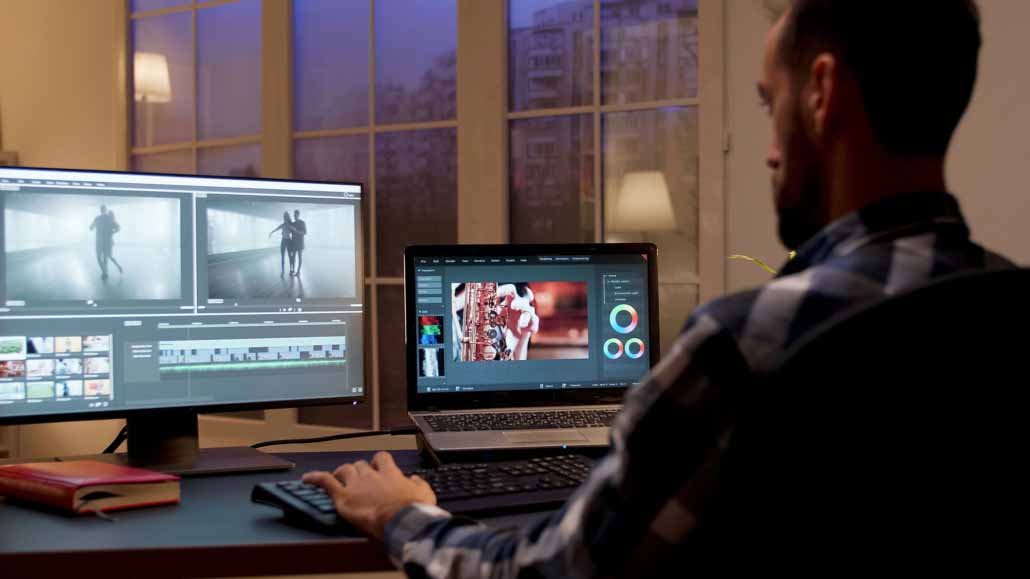
Photo: Video editor preparing the final export of a film. Photo created by DCStudio – www.freepik.com
The locked cut of a film is usually considered to be completed or near-complete visually. This final cut will often be provided to the audio post-production house to produce and mix the final audio.
The final version of the film is called a “final cut” and is completed and ready to be released to the public. The creative team behind the film will have finished editing it, adding audio and visual effects, and making any other changes that they deem necessary.
The Different Phases of Audio Post
Editorial and Dialogue Editing
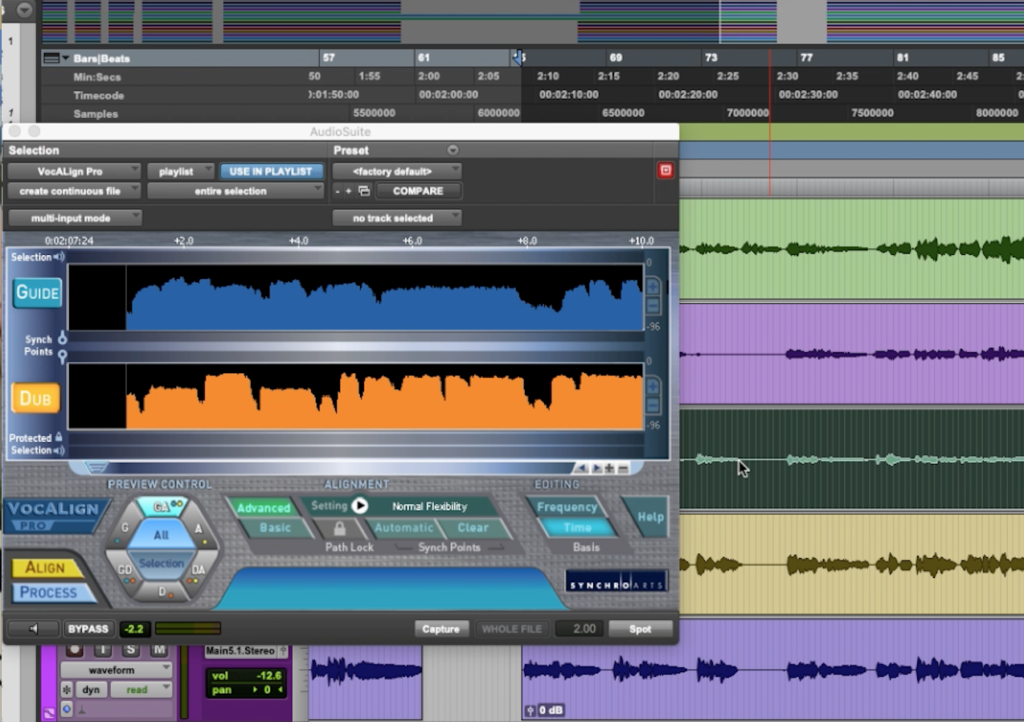
Photo: ADR dialogue editing using Pro Tools and the VocAlign Plugin.
Production dialogue editing is the process of editing audio before it is broadcast or released. It can be done by a producer or engineer.
Audio production dialogue editing is an integral part of the post-production process. With the help of this tool, all extraneous noise can be removed from the sound, making for a more pleasurable listening experience. It can also be used to cut out any pauses or mistakes to make the dialogue seem more fluid and unified.
At times, the dialogue editor may have to blend onset and ADR-recorded dialogue. With this, the editor has to use different tools like EQ match, convolution reverb to match rooms and environments, audio compression, and other technical tools.
ADR (Automated Dialog Replacement)
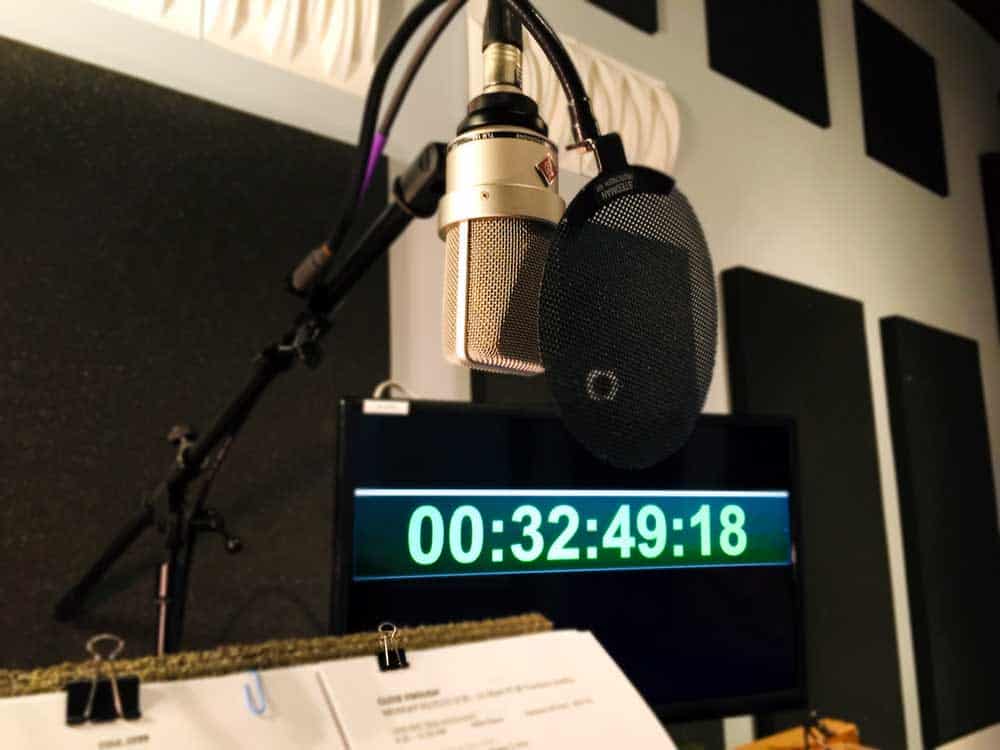
Photo: ADR recording booth recording dialogue for animation.
ADR has been used in the film industry for decades. It is used to replace dialogue that was poorly recorded or to replace dialogue that was not recorded at all. With advanced technology, it is now possible to record ADR in a studio environment, which eliminates the need for actors to come into a sound studio and record their lines.
For large motion pictures, the majority of the dialogue you hear will be ADR. In the film, when a scene is filmed, the actors’ mouths may not be seen on screen. In these cases, the dialogue they say is recorded in a studio or with microphones on set and edited in later.
There are many reasons why an actor might need to do ADR in the studio. Some of these include:
- The original audio was unusable because it was too noisy or had too much background noise.
- The director wanted to change something about how the lines were delivered.
- The actor did not speak clearly and needed to rerecord their lines.
Sound Effects Editing and Foley
Sound design editing is the process of adding sound effects from a sound library to a film, video, or other audio recordings. Foley is the art of recording sound effects for films and videos.
The sound effect editor will be responsible for the selection and placement of these sounds to create an audio environment that matches the action on screen.
Sound effects editors are also responsible for ensuring that the sound quality is at a professional level, as well as adding any additional sounds that may be needed to enhance the story being told by the visuals.
What is a foley artist?
A Foley artist creates these sounds using props, foley machines, or their own body to produce specific noises like footsteps or clothing rustling. The name comes from Jack Foley who pioneered this technique in Hollywood during the 1920s.
A Foley artist will record the following:
- Walking on the carpet or rug.
- Walking on different surfaces, such as tile, wood, metal grating, gravel, leaves, and so forth
- Various types of footsteps: running, jumping down from a height, shuffling in place
- Footsteps in various environments: indoors (carpeted), outdoors (gravel), indoors (wooden floor)
- Bumping into objects, punches, falls, etc.
- Movements on grass, snow, dirt, etc.
- Clothes rustle and movements
- Water and splashing
Music Composing And Music Editing
Music composition is the process of creating a song or other piece of music, usually in a written form. Composers are typically divided into amateur and professional. Amateur composers include people who create music for their enjoyment or to accompany another activity such as playing video games.
One of the most important jobs of a music composer is to create an emotional reaction in the audience. This reaction can be one of sadness, happiness, or anything in between. The composer has to work with what is happening on the screen and come up with a score that matches it.
It’s not just about coming up with catchy tunes either; it’s about creating an atmosphere that will match what is happening on screen and then using that mood to tell the story.
Music editing is the process of selecting and arranging recorded sounds on a track, typically with an audio editor such as Pro Tools or Logic Pro. This can include adding effects such as reverb or compression to individual tracks; adjusting levels; balancing volumes; editing tempo, key signature, and time signature; and adding fades.
Re-recording Mixer
Re-recording mixers are an essential part of the production team in a recording studio. Their responsibility is to balance and adjust sound levels, adjust sound effects, and edit the song’s performance if needed. These professionals are usually found in post-production studios for movies, TV shows, and music videos.
The role of a re-recording mixer is to take the various soundtracks and other recordings and combine them into a cohesive product that will please listeners. They are responsible for ensuring that all frequencies are audible, as well as making sure there is no unwanted noise or distortion. They also need to be mindful of how loud or soft certain parts of the mix should be.
Mixing & Mastering
Mixing and mastering is the process of balancing volume levels and equalizing audio frequencies. It is a crucial step in the recording process, but it’s also one of the most important factors in the quality of your final product.
We hope this article was helpful in explaining the aspects of audio post-production. Visit our audio production service page if you require any production.

